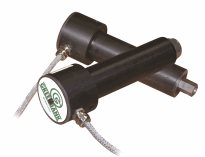Leak Detection

Steams leaks are a major source of lost availability. Leaks grow in size and often damage adjacent plants, causing plant safety issues if left undetected and unchecked. To help prevent plant damage and associated problems from steam leaks,
The LA series of sensors have the pedigree of 30 years of leak detection design and application experience, originally developed in the 1970’s.
This is because from the white noise from a steam leak, the high frequencies are attenuated heavily in air, but the sound with frequencies just above the boiler background travel well along the corridors in-between tube banks. The airborne system sensor has a typical listening range up to 45 feet (14 m), with a tube leak (hole) of 0.1 inches (2.5 mm), which can be extended when sound propagates through a tube bank corridor where they are typically located.
Sensors are typically placed on both sides of a boiler in a box arrangement at a level in-between two rows of tube banks to allow comparison between absolute sound levels making the location of the leak relatively straight forward.

Detecting a leak is a simple matter of monitoring the sound level of each sensor (which has boiler noise filters applied) and trending the absolute sound level and observing the rate of change against time.
The normal background noise of a particular sensor will be 70 - 85 dB (the dB will be vary in different areas of the boiler and will be boiler type dependent). Leaks will generate noise of 90 dB and over, and will continue to rise and can be easily distinguished in-between soot-blowing operations.
The system sensors are designed to operate in extremes of temperature, in excess of 125 degrees centigrade, are finely tuned and cut out the background boiler noise – allowing for quick and effective detection.